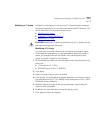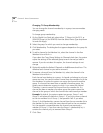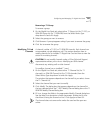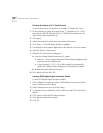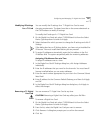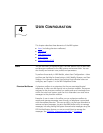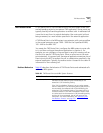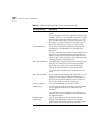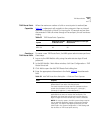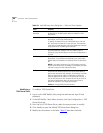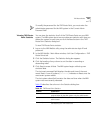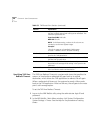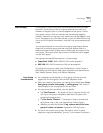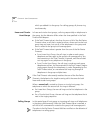
TAPI Route Points 265
TAPI Route Points A TAPI Route Point is a virtual device within the NBX system where calls
are held pending action by an external TAPI application. Route points are
typically used by call center applications to redirect calls. A redirected call
is one that is sent from its original destination (the route point) without
being answered, to a new location specified in the external application.
A TAPI Route Point in the NBX system is an extension with a voice mailbox
in the normal extension range: 1000 - 3999 for the SuperStack3 NBX;
100 - 449 for the NBX 100.
You create the TAPI Route Point, configure the NBX system to route calls
to it, and then configure the external application to monitor it. For
example, you can configure a line card port to send all incoming calls on
that line to a specific TAPI Route Point. When a call arrives at the route
point extension, it is queued until the external application examines it and
then instructs the NCP to redirect the call to a destination specified in the
external application. Typically, the redirect action is based on the caller ID
information of the incoming call.
Redirect Behaviors Table 50
describes the behavior of TAPI Route Points and redirected calls
within the NBX system.
Table 50 TAPI Route Points and NBX System Features
Call Redirected to Description
Internal extension If the internal extension has activated Do Not Disturb, a call
redirected to that extension goes immediately to the
extension’s Call Forwarding setting.
If the TAPI Line Redirect Timeout is set to a value greater
than the extension’s Call Forwarding setting and the call is
not answered, the redirected call will be handled by the
extension’s Call Forwarding setting. The system will log a
successful redirect. If the TAPI Line Redirect Timeout is set
to a value less than the extension’s Call Forwarding setting
and the call is not answered, the call will return to the
route point. For more information, see “
Specifying TAPI
Line Redirect Timeout” on page 270.



